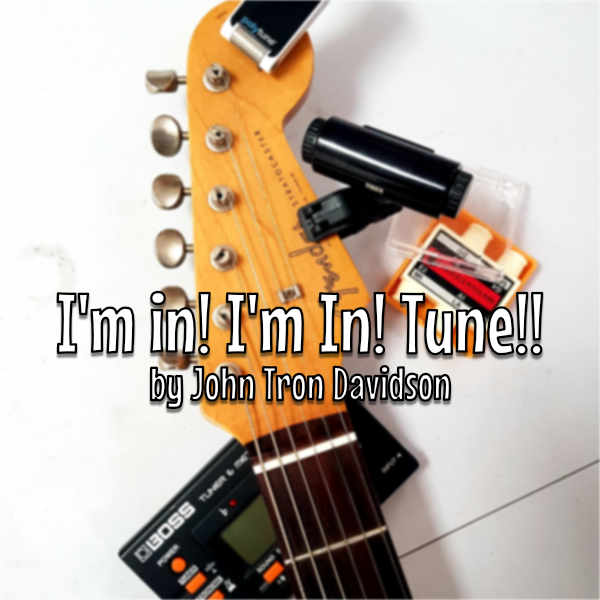
I’m in! I’m In Tune!
So you’ve got yourself a new fuzz? That’s cool. Brand new multi-stage delay with modulation? Ace. Ring mod with a chorus built in wired to an expression pedal? Mate. These are all super exciting, but when did you last get as jazzed about a tuner? As a drive and distortion lover, I went years without one on my board, preferring to sacrifice it to squeeze more loud pedals on, and in the age of Snarks and clip-ons a lot of players do the same. This means that the lowly pedal you never pay any mind to never gets its due, and in today’s post, I’m going to examine why that’s a shame.
One of the flaws in guitar design is that the very nature of the instrument means it’s never completely in tune. 95% of your beloved item will be correct, but there’s a chord or a shape somewhere where it won’t sound right. There’s been all sorts of attempts to counteract this, from tempered frets to fanning, compensated nuts to bridge changes, and though a few companies have tried going the automated tuning route, it’s been met with revulsion because guitarists like things to be simple, or because the systems had too many drawbacks (the Gibson Robot’s geared tuners meant that if you turned them yourself, they broke immediately). This means that the number of guitarists who still ask ‘can you give us an E’ remains fairly high, and that a number of the giant boards you see roaming Instagram don’t have tuners on.
Given that tuning technology is now significantly more accurate than it was even ten years ago and that the choice is no longer limited to a knackered TU-2, we’re all missing a trick. One of the major factors as to why a good tuner is a massive boon for spearheading your board is that of buffering. Although I’ve covered this very topic at great length in a previous blog post, it’s worth bringing up here – having a buffer at the start of your signal path can make all the difference in the world. Your TU-3? Buffered. The Polytune 3? That now contains the Bonafide Buffer, and while the Polytune 2 and the Mini both have ‘true bypass’ written on the front, they have the option for you to engage buffered mode, which can address signal loss issues and smooth out the spiky bits of your sound.
Onstage, being able to tune in-between songs without searching vainly for the right note by ear is a large deal. If this sounds incredibly obvious to you, remember that not everyone takes the same approach to their setup that you do, and that a lot of players would rather have another fuzz/delay than a tuner, because they can always do it by ear. This doesn’t look especially professional though, and as there’s really no excuse for it nowadays (a second-hand TU-2 is cheaper than a bag of crisps), you too can revel in the joy of tuning with your eyes rather than your ruined, tinnitus-choked earholes.
Tuners aren’t just part of proper safety gear though. Away from the stage, techs have to rely on tuners to check intonation correctly, not to mention keeping all of your gear right before it hits the stage. If your guitar has just come off a long flight and you didn’t slacken the strings off before travelling, do you just take it out of the case, tune it to the bottom string and run with it? No – you step on your greasy tuner and get it right first. No matter how rock and roll you are, your audience deserves to hear you playing in tune, and if you’re someone who plays in open tunings, trying to do that without a tuner in a live setting is cold-blooded murder. Some tuners let you strum the strings open in whatever base key you might be in and give you an arc of the whole guitar, so even if you’re the most broad-strokes guy imaginable, you don’t have an excuse. As a final thought, when you’re changing guitars onstage, or something goes wrong with the one you’re using, rather than turning your amp off or unplugging things in a flap, step on your tuner. Acting as a mute switch can be an invaluable thing, and as some tuners have the ability to be fed from volume pedals or from the effects loop, you don’t even have to have it in the direct signal path if you don’t want to.
It’s difficult to make tuning pedals sexy – though TC did try with the Noir – but practical things aren’t sexy. Tax returns aren’t sexy. The international monetary system isn’t sexy. The department for the maintenance of roads and pathways isn’t sexy. These are all things that are a part of the bigger picture of life, which provide a valuable service in their respective fields. Very few people get excited about strings, nut materials, the mass of a bridge block or scratchplates, but like tuners, these are all important things that help the guitar world keep ticking. Think about what routing options you might like for this essential piece of equipment, what it might be able to do for you, and how it’s probably a good idea that at least one person in your band has one. Tune hard, live free!
John Tron Davidson is a musical journalist, blogger and owner of Heavy Repping! the best plectrum blog on the internet.
Also look at John’s other article of True Bypass: https://www.breakthemachine.co.uk/at-a-bypass/

